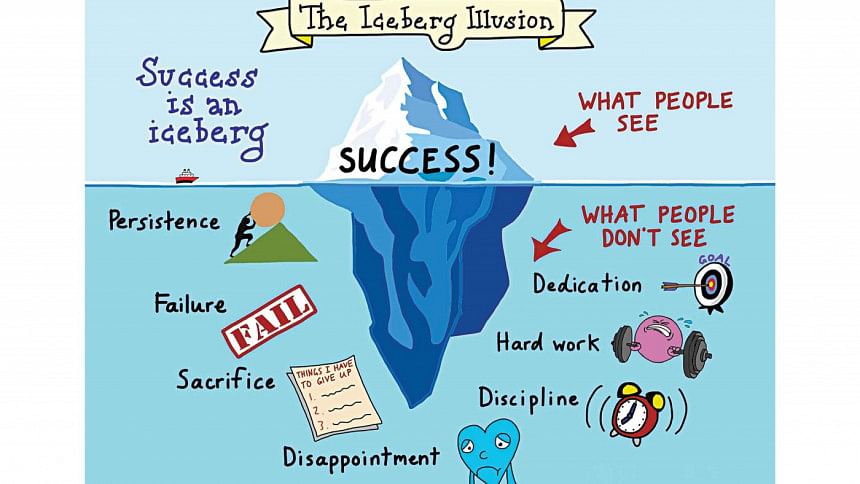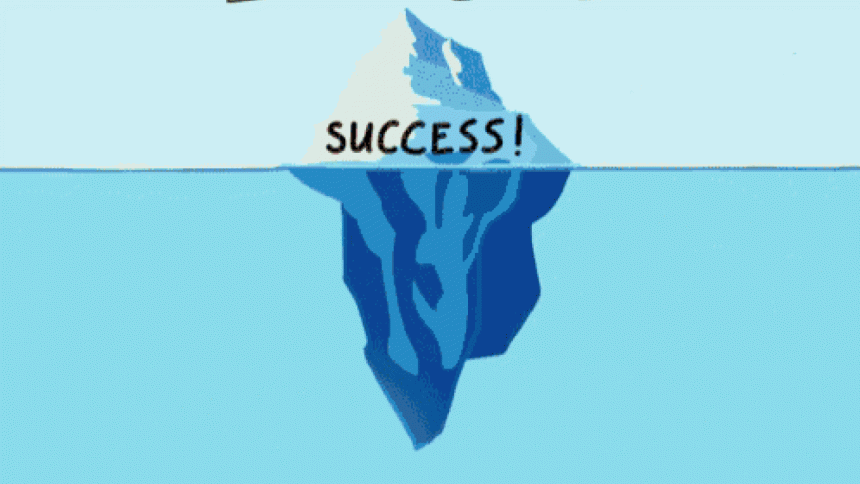The Illusion of Success

I
One of the first things we're exposed to in school is competition. We first visit competition in the guise of grades. Grades soon become a part of our lives. Sometimes it's good results in an exam. Sometimes it's victory in sport or group activity. The outcome of these grades is one of the first things that gets engraved into our genetic coding: success. It's this success that we chase for the rest of our lives. It's this metric we're measured against.
Success is defined as an accomplishment we achieve and show to others. At the beginning of the year, we may have made a resolution to lose weight. The moment we achieve this target we want to "share" with others in social media. Our news feed is full of successful people sharing their success stories.
Our news feed is full of two other types of posts. First, posts of advertisements that induce you to learn an activity in seven days and be successful. You become encouraged to enrol in a course and get a certificate. Then there is the group of all successful celebrities in our lives.
We see how successful Djokovic, Nadal and Federer are. We see our own hero, Shakib Al Hasan, maintaining the number one spot of all-rounder year after year.
We see all these successful people and "look up in the sky". We ask ourselves: "Is it a bird, is it a plane, no it's Superman!". Success truly isn't what it is. Even Superman is very mortal and down to earth than we would like to think.

II
Success is an iceberg. What we see is far from the reality. The part of the iceberg we see is the success part. A big chunk of ice floating on the sea. We become enthralled. There's always more to the picture than meets the eye. We seldom see the hard work, the effort and the dedication that lies beneath the iceberg. We don't see the good habits one needs to boost their mental muscles to stick to a task.
What we may fail to see is the series of failures and disappointments under the iceberg. Success is the outcome only. The series of failures and disappointments is the process that lead to the success.
III
Matthew Syed is a British journalist, author, broadcaster and also a table tennis player. In his first book Bounce, in 2010, he writes, "When we witness extraordinary feats… we are witnessing the end product of a process measured in years. What's invisible to us… is the countless hours of practice that have gone into the making of the virtuoso performance." The most successful people, people we call a genius, didn't become so in our eyes over-night. Success wasn't gifted to them on a silver platter. Success required years of "insane commitment" to reach the face of the iceberg we see.
Michael Jordan is one of the most successful basketball players ever. He summed up why failure is the pillar of success, "I've missed more than 9,000 shots in my career. I've lost almost 300 games. 26 times, I've been trusted to take the game winning shot and missed. I've failed over and over and over again in my life. And that is why I succeed."
IV
Success is two-fold. First to endure the pain to stand up. And then to endure more pain to keep standing up. In the end, success is doing something you love. You're happy doing what you are. That's the reward of success. Even if nobody acknowledges, you're happy with yourself. That's what counts more.
Asrar Chowdhury teaches Economics in classrooms. Outside, he watches Test cricket, plays the flute and listens to music and radio podcasts. Email: [email protected] or [email protected]

 For all latest news, follow The Daily Star's Google News channel.
For all latest news, follow The Daily Star's Google News channel. 



Comments